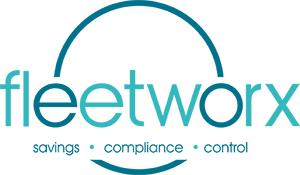18 Feb Beyond the deal: why fleet contract governance matters more than ever
Securing a fleet deal is just the beginning. Once the contract is signed and new vehicles are ready to roll out, it’s tempting to think the hard work is over. But in reality, the challenge is just beginning.
To prevent cost creep, organisations must apply robust contract governance, supply chain oversight, and financial controls. Without these, businesses risk escalating costs, supplier-imposed fees, and inefficiencies that erode the value of the contract over time.
Understanding Contract Cost Creep
Fleet contracts are not just about upfront pricing; they involve a complex web of cost structures that can shift over time. While declared management fees account for about 20% of a leasing provider’s revenue, the remaining 80% comes from additional, often less visible costs. These include:
Supply Chain Rebate Margins
- Manufacturer/importer/dealer rebates
- Maintenance network rebates
- Tire and glass rebates
Contract Margins
- Interest margins
- Contract adjustment fees
- Early termination penalties
Recharges & Markups
- Out-of-contract recharges
- Contract re-writes
While these costs are legitimately applied, without proper governance, they become opportunities for excessive markups. A fleet of 500+ vehicles can have as many as 60 different cost types, each carrying the potential for cost creep if left unchecked.
The Mid-Term Risk
In the early days of a contract, cost management seems straightforward. Lessors are eager to maintain the relationship, and finance teams are handling a manageable volume of invoices. However, once the contract reaches mid-term, things change:
- The lessor looks to recoup margins on areas that were overlooked initially.
- Vehicles age, increasing maintenance and operational costs.
- The finance department, overwhelmed with invoices, may miss discrepancies.
This is when contract governance becomes critical. Without a structured approach, hidden costs multiply, and organisations lose visibility over spending.
Key Areas of Fleet Contract Governance
- Contract Re-Writes & Mid-Term Adjustments
Many fleet contracts include clauses allowing lessors to adjust terms if mileage deviates from the original agreement. If left unchecked, this can significantly increase costs.
How to prevent unnecessary cost increases:
- Retain approval rights for all contract changes.
- Implement a governance process to evaluate whether re-writes are justified.
- Analyse vehicle usage trends early to anticipate and address deviations proactively.
- Order Approval & Vehicle Specification Compliance
Managing vehicle churn in a fleet is resource-intensive. Without strict approval processes, businesses risk specification drift, where employees request vehicles or options beyond the agreed corporate policy.
How to ensure compliance:
- Establish clear entitlement levels and pre-approved benchmark vehicles.
- Ensure order approvals are impartial and follow structured guidelines.
- Prevent unauthorised extras from being added by employees or approved informally.
- Invoice Management & Cost Validation
A company operating a large fleet deals with hundreds of invoices and thousands of line items from multiple suppliers, making it easy for errors, duplicates, and unauthorized charges to slip through.
How to streamline invoice governance:
- Verify invoices against contractual terms, expected costs, and vehicle assignments.
- Implement automated invoice auditing to flag discrepancies.
- Ensure suppliers provide transparent cost breakdowns to prevent hidden markups.
- Early Termination Controls
Ending a vehicle lease early can be costly, as lessors apply penalties designed to recover lost earnings. Many companies fail to negotiate fair early termination terms upfront, leading to unexpected expenses.
How to minimize early termination penalties:
- Define a transparent early termination formula in the contract.
- Regularly assess fleet utilization to prevent unnecessary early exits.
- Ensure flexibility clauses are built into agreements where possible.
The Legal Governance Challege: IFRS16 & Compliance
The introduction of IFRS16 accounting standards in 2019 has fundamentally changed fleet lease reporting for publicly listed companies.
Previously classified as operating leases, most vehicle contracts must now be reported on the balance sheet. This requires more granular data tracking, yet many businesses struggle due to:
- Inconsistent supplier reporting standards across markets.
- Consolidation challenges—some markets provide detailed cost breakdowns, while others issue single monthly invoices covering all services.
- Limited internal resources to manage complex, multi-supplier relationships.
How to Ensure IFRS16 Compliance
Establish a centralised data collection process for all fleet lease agreements.
Work with suppliers to standardise reporting formats across regions.
Use fleet management technology to track lease data in real-time.
The Solution: A Total Fleet Category Management Approach
Governance is not just about cost control—it’s about visibility, accountability, and efficiency.
By implementing Total Fleet Category Management (TFCM) principles, businesses can:
✔ Centralize governance across multiple suppliers & markets.
✔ Ensure contractual compliance and prevent unexpected cost escalations.
✔ Standardize reporting to meet legal and financial requirements.
Fleetworx specialises in helping businesses take control of their fleet costs through structured governance frameworks. Want to know more? Download our TFCM eBook or contact Graham Rees at +44 (0) 1926 353300 for expert insights.
Back to Blogs Back to Case Studies List

Sorry, the comment form is closed at this time.